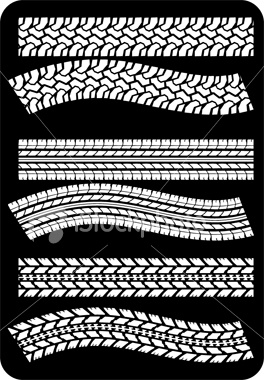
 |
| Materials and Design of Tires |
| Main Tire
Composition: Steel Rubber/Synthetic Compounds Ply Fabrics Tires are mainly composed of rubber, largely from different synthetic rubbers and some natural rubbers. Different strength synthetic rubbers are used for different parts of the tire. For instance, the sidewalls of a tire may require an extra additive of synthetic rubber to increase lateral stability capable of enduring turns. Centripetal force (F = MV^2/R where M is mass, V is velocity, and R is radius of curvature of the turn) can be extremely great during a high speed highway turn, and the tire's frictional force needs to be able to withstand this to keep the vehicle balanced. In the image shown, parts of a tire such as the bead is composed of steel cord to withstand pressure and forces tires go through. The body of a tire is commonly made of ply fabric, also titled plies. Plies run perpendicular to the tread, as shown in the image. |
 |
The Tread of a Tire: Tread is extremely important, as the tread dictates what type of environments the tire may be taken in. Again, the tread may be composed of different types of synthetic rubbers. For example, Bridgestone Blizzak tires are composed of an extremely soft but deep tread, capable of achieving extreme traction in the snowiest conditions. Different treads and material types are able to increase or decrease the coefficient of friction accordingly depending on the tire need. All-season tires are a semi-hard tread with shallower lines that reduce road noise but yet still allow decent traction in multiple conditions. The image to the right shows the silhouettes of several different tire treads. Images taken from howstuffworks.com and tireisland.com |
 |
| Home |
Tire
Environment |
Materials
and Design |
PV=nRT
Behavior |
Behavioral
Consequences |
Tire Summary |
Bibliography |